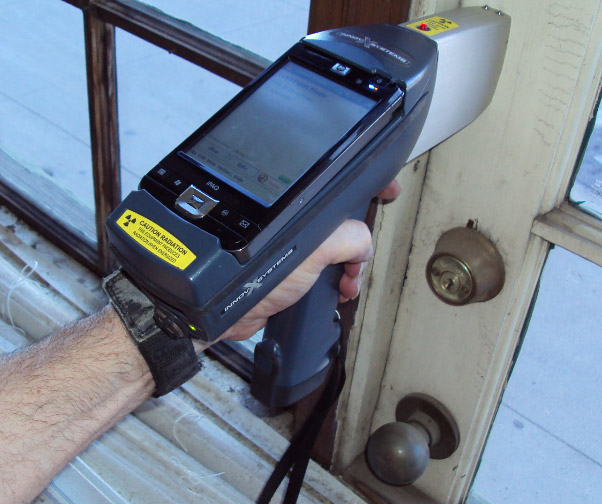Comprehensive Guide on Effective Lead Infraction Elimination Methods
In the world of ecological safety and security, dealing with lead offenses demands a precise and organized technique. This extensive overview begins by highlighting the critical initial actions of identifying lead risks via innovative assessment and testing approaches. Techniques such as XRF evaluation and dust clean sampling are indispensable in determining contamination sources. The guide clarifies on the relevance of adhering to stringent security protocols during the removal procedure, consisting of the usage of correct PPE and isolating influenced locations. The subsequent sections assure to go over post-removal verification and preventive techniques, guaranteeing long-term security and compliance. Discover the intricate information that make these strategies not simply efficient yet essential.
Recognizing Lead Hazards
Recognizing lead threats is a vital first step in alleviating the risks associated with lead exposure. Lead, a toxic metal, can be existing in various environmental tools, including paint, dirt, water, and dust.
The first stage in determining lead risks includes understanding common lead resources within the constructed setting. Structures constructed prior to 1978 are especially prone as a result of the common usage of lead-based paint throughout that duration. Furthermore, dirt contamination can happen from wearing away outside paint, commercial exhausts, or historic use leaded fuel.
An additional considerable resource is lead piping and plumbing components, which can leach lead into drinking water. Durable goods such as toys, porcelains, and imported items might also include damaging lead levels. Significantly, work atmospheres and leisure activities entailing lead can track impurities right into homes.
Evaluation and Screening
When dealing with lead hazards, efficient analysis and screening are critical. This vital action makes certain the identification and quantification of lead visibility, consequently assisting succeeding removal initiatives. Preliminary analysis commonly involves a visual assessment to recognize potential lead sources, such as deteriorating paint or contaminated dust. This is complemented by more rigorous testing methods to establish the extent of contamination.

Dirt clean tasting is one more important technique, especially in property settings. By collecting samples from floors, windowsills, and various other surface areas, this method gives insights into potential exposure risks. Additionally, dirt testing around building boundaries is necessary to identify lead contamination that could posture threats, specifically to youngsters.
Safe Removal Procedures
Upon finishing complete analysis and testing, applying risk-free removal treatments is the next vital stage in dealing with lead threats. This process guarantees that lead-contaminated products are properly and safely removed, decreasing threat to both workers and locals. The initial step involves separating Source the afflicted location utilizing plastic sheeting and correct securing strategies to stop the spread of lead dust.
Employees have to don proper personal safety equipment (PPE), consisting of respirators, handwear covers, and disposable coveralls, to mitigate direct exposure. Using specialized tools and wet approaches, such as damp sanding or making use of HEPA-filtered vacuum cleaners, minimizes the dispersion of lead fragments. It is critical to stay clear of dry fining sand or abrasive blowing up, as these methods can generate unsafe lead dirt.
Waste disposal is another essential component; all infected materials need to be safely gotten and labeled according to EPA and regional regulations. In addition, comprehensive cleansing of the workspace with HEPA vacuums and damp cleaning guarantees the elimination of recurring lead fragments.
Post-Removal Confirmation

Verification of effective lead elimination, recognized as post-removal verification, is imperative to guarantee the safety and security and habitability of the remediated area. This procedure involves a series of precise assessments and examinations designed to identify any residual lead particles that might present health risks. The initial action commonly includes an aesthetic assessment to analyze the completion and high quality of the removal work. This evaluation makes certain that all well-known resources of lead have actually been addressed and that no noticeable indicators of contamination remain.
Following the aesthetic examination, ecological sampling is carried out. This involves accumulating dirt, dirt, and occasionally water examples from the remediated area. Certified labs evaluate these samples to determine lead degrees, guaranteeing they drop listed below the safety and security he said thresholds established by regulatory bodies such as the Epa (EPA)
In enhancement, air quality testing may be carried out to detect airborne lead bits, specifically in cases where substantial lead-based paint elimination or renovation has occurred. The results of these examinations offer measurable information validating that the lead levels are within allowable restrictions.
Ultimately, post-removal confirmation offers as a critical checkpoint, verifying the effectiveness of the lead reduction efforts and guarding the health and wellness of passengers and visitors.
Preventive Steps and Maintenance

A crucial safety net see post consists of the usage of lead-safe accredited contractors for any kind of remodelling, repair service, or painting tasks. These professionals are learnt practices that lessen lead dust and debris. In addition, maintaining colored surface areas to stay clear of damaging or peeling is vital, as weakening paint can launch lead particles right into the environment.
Educational initiatives targeting property owners and renters concerning the dangers of lead and the importance of reporting any kind of possible hazards can additionally boost preventative efforts. Regular cleansing using HEPA vacuums and wet wiping techniques can considerably minimize lead dust accumulation.
Final Thought
In summary, effective lead offense removal requires a meticulous approach encompassing thorough analysis, accurate testing, and stringent removal procedures. Guaranteeing safety through appropriate isolation and personal safety tools remains critical. Post-removal confirmation using environmental sampling and air top quality testing confirms conformity with recognized safety requirements. Furthermore, ongoing evaluations and upkeep are necessary to reduce future lead hazards, thus protecting public wellness and making sure sustained compliance with regulatory needs.
Comments on “Lead Removal Contractors-- Knowledgeable Professionals for Lead Abatement”